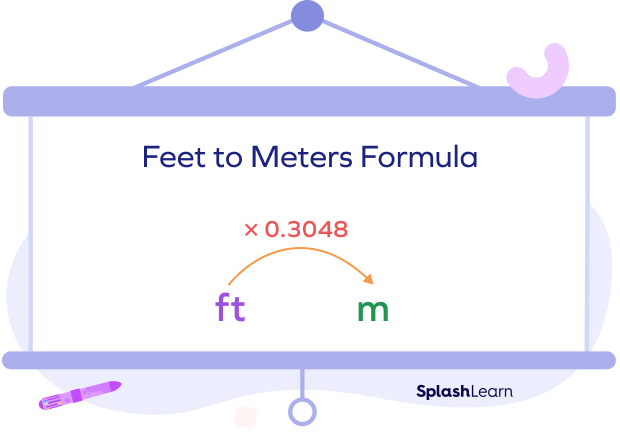Ever found yourself staring blankly at a recipe or a construction plan, wondering how to convert meters to feet? You're not alone! Whether you're planning a home improvement project or trying to understand travel distances abroad, knowing how to convert meters to feet is super handy. In this article, we’ll walk through real-life meter to feet conversion examples, practical scenarios, and tips to make this conversion a breeze. Let’s dive in!

Why Convert Meters to Feet?
First off, let’s talk about why you might need to convert meters to feet. The metric system (meters) is widely used in most countries, while feet is common in the United States. If you're in the U.S. and working with international plans or recipes, you’ll often find yourself needing to make that switch.
1. Home Improvement Projects: Measuring Up
When embarking on a home improvement project, knowing how to convert meters to feet can save you a lot of headaches (and dollars!). For instance, if you’re ordering materials like flooring or paint, the measurements are often in meters.
Example:
Let’s say you want to install new flooring in your living room, which is 3 meters long and 4 meters wide. To calculate the area in square feet:
- Convert meters to feet:
- 3 meters = 9.84 feet
- 4 meters = 13.12 feet
- Area = length × width = 9.84 ft × 13.12 ft = about 129.6 square feet.
Now you can confidently order the right amount of flooring!
2. Travel Plans: Navigating New Places
Imagine you’re traveling to Europe. You hear someone say that a landmark is 500 meters away. You might think, “What’s that in feet?” Here’s where your conversion skills come into play!

Real-world Application:
When walking in cities like Paris or Berlin, distances are commonly displayed in meters. Knowing the conversion can help you gauge how far you have to walk.
To convert:
- 500 meters × 3.281 = 1,640.4 feet.
That’s a decent walk, so make sure you’re wearing comfy shoes!
3. Fitness and Sports: Setting Goals
Are you a runner trying to measure your distance? Most running apps will give you metrics in kilometers or meters. If you’re training for a marathon in the U.S., you’ll want to convert those distances into miles or feet.
Case Study:
Let’s say you’ve run 10,000 meters. To convert this into feet:
- 10,000 meters × 3.281 = 32,808.4 feet.
Knowing your distance in feet can help you visualize your progress better, especially if you’re used to measuring in miles.
4. Everyday Cooking: Scaling Recipes
Ever tried a recipe that lists ingredients in grams and meters? Converting these can feel daunting, especially in baking where precision is key.

Practical Meter to Feet Measurement Scenario:
Imagine you're baking a cake that needs a pan size of 0.5 meters in diameter. You need to convert this into feet to determine which pan to use.
To convert:
- 0.5 meters × 3.281 = 1.64 feet.
Now you know to grab your trusty 1.5-foot cake pan instead of a confusing 0.5-meter one!
5. Landscaping: Planning Your Garden
If you're working on your garden, you might come across plans specifying dimensions in meters. Converting these measurements can help you make sure your plants have enough room to grow!
Example of Meter to Feet in Landscaping:
Suppose your garden bed is 2 meters long. Converting to feet:
- 2 meters × 3.281 = 6.56 feet.
Knowing this helps you visualize how your garden will fit within your yard and ensure you have the right space for planting.
Conclusion: Embrace the Conversion!
From home improvement projects to cooking and traveling, converting meters to feet is a skill that can come in handy in various real-life scenarios. Remember, the conversion factor is simple: 1 meter = 3.281 feet.
So, the next time you face a meter-to-feet conversion, don’t let it stump you! With these tips and examples, you’ll be able to tackle any measurement challenge that comes your way. Ready to take on your next project? Convert those meters and feet like a pro!